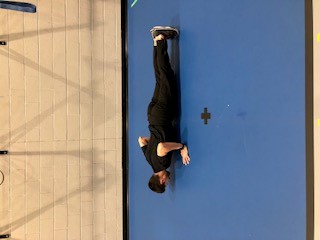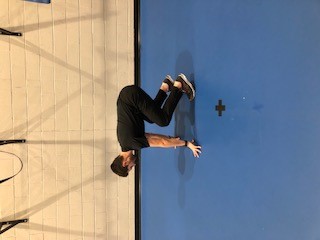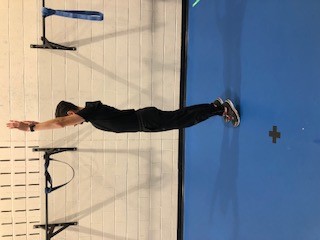Resistance Training
Resistance Training
Training Principles & Tips
Muscular strength
- To improve muscular strength, complete 3-5 sets of an exercise in the 8-12 repetition range with a weight or load that makes the last few repetitions challenging. Take 30-60 seconds of rest between each set.
- To improve maximal strength capabilities, complete 3-4 sets of an exercise in the 3-5 repetition range with a weight or load that makes the last couple of repetitions challenging. Take 2-3 minutes of rest between each set.
Muscular endurance
- To improve muscular endurance, complete 2-3 sets of an exercise in the 12-15+ repetition range with minimal rest between each set.
Muscle hypertrophy (growth)
- To increase muscle mass, complete multiple sets of an exercise (e.g. 3-5 sets) in the 6-15 repetition range with a weight or load that makes the last few repetitions challenging. Take 30-120 seconds of rest between sets. To create the best stimulus for muscle growth, complete each set until muscle failure (i.e. inability to complete another repetition in a safe manner).
- Structuring workouts
- Resistance training workouts can be structured in a variety of methods including the following:
- Sets
- Complete various sets of one exercise before moving onto the next exercise.
- Circuits
- A circuit is a series of exercises (e.g. 4-5 exercises) completed one after another without taking prolonged periods of rest after completing each exercise. After completing the last exercise in the circuit, take a short rest break before starting the next round. Aim to complete 3-5 rounds of the circuit.
- Supersets
- This method of resistance training includes completing two exercises one after another without taking a rest break after completing a target number of repetitions for the exercise.
- Drop-sets
- This method of resistance training requires you to complete repeated sets of an exercise until failure (i.e. inability to complete another repetition safely). Reduce the load of the exercise after completing a set and take minimal to no rest period before starting the next set.
- Sets
- Resistance training workouts can be structured in a variety of methods including the following:
Exercises
Dumbbell
Upper body
Bent over row
- Exercise explanation: Grab onto a chair/bench for support and stagger your feet. Raise the weight towards the side of your torso at ribcage level. Squeeze the shoulder blades together as you are raising the weight.
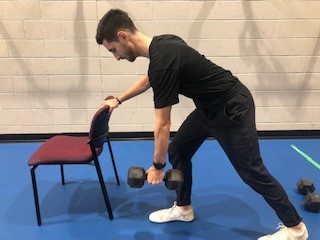
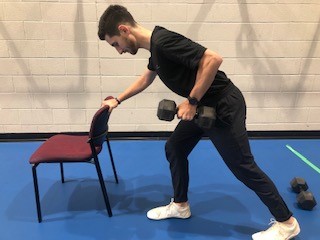
Bicep curl
- Exercise Explanation: While holding onto a set of dumbbells, start with your palms facing your thighs or facing forwards. Raise both dumbbells from the hip to shoulder height while keeping the elbows close to you sides. Avoid using momentum created from the upper body or hips to raise the dumbbells.
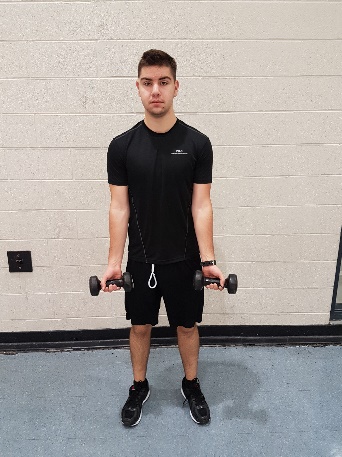
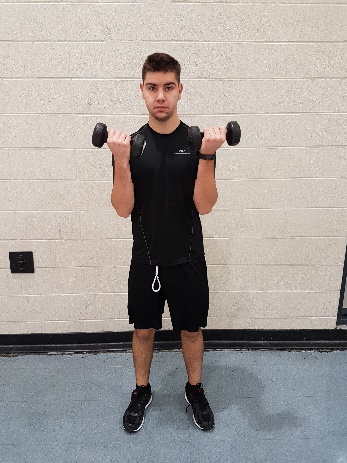
Shoulder Fly
- Exercise Explanation: Raise the dumbbells to shoulder height. Have both thumbs slightly pointed upwards while raising the dumbbells and avoid shrugging your shoulders throughout the movement.
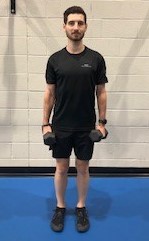
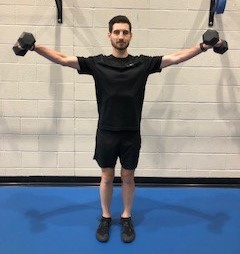
- Shoulder press
- Exercise Explanation: Slightly stagger your feet a comfortable width apart to provide yourself with sufficient stability. While keeping the core engaged, raise both dumbbells above your head. Prevent your back from extending while raising the dumbbells.
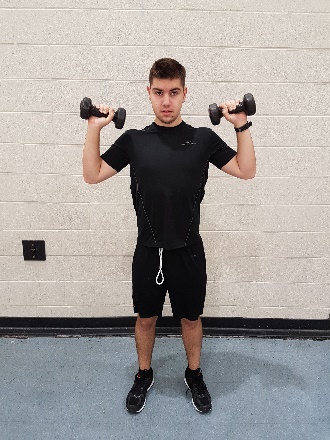
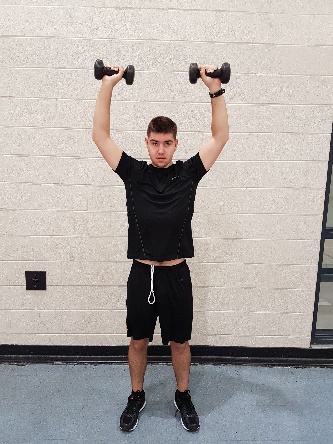
- Lower body
Forward lunge
- Exercise explanation: Take a step forwards and descend into a comfortable position while preventing excessive knee bending (i.e. prevent the knee from travelling > 1-2 inches past the toes). Keep your hips, knees, and toes aligned at all times. Push through the mid-foot as you ascend from the lunge.
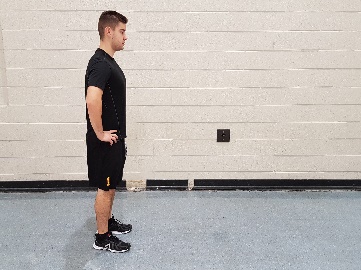
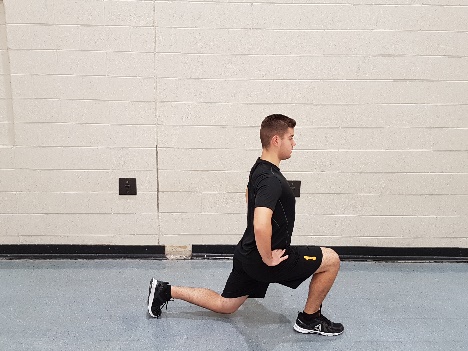
Reverse lunge
- Exercise explanation: Take a step backwards and descend into a comfortable position while preventing excessive knee bending (i.e. prevent the knee from travelling > 1-2 inches past the toes). Keep your hips, knees, and toes aligned at all times. Push through the mid-foot as you ascend from the lunge.
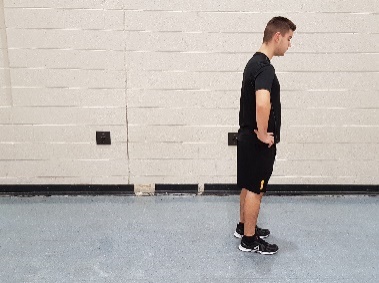
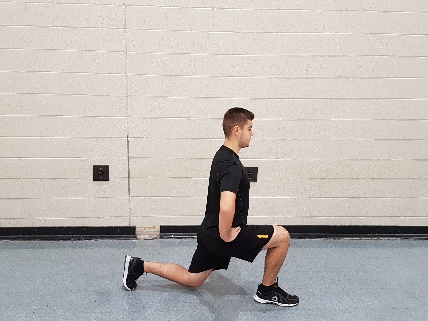
Romanian Deadlift
- Exercise Description: Stand with your feet shoulder width apart. Slightly bend your knees and lower the weight towards the ground. Push through the mid-foot and return the weight to the starting position while keeping the weight close to your body throughout the movement. Ensure you are moving through your hips, not your back.
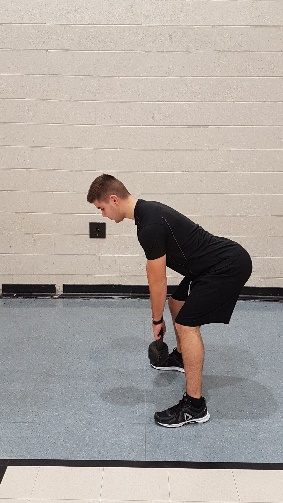
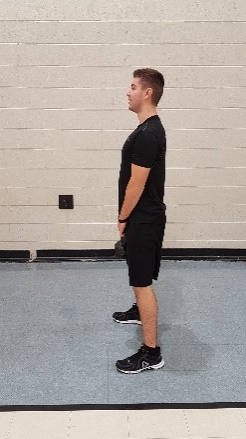
Kettlebell
- Upper body
- Upright row
- Exercise Explanation: Hold a kettlebell with both hands and feet shoulder width apart. Keep the weight close to your body and raise the kettlebell to a comfortable position. Slowly lower the weight to the starting position.
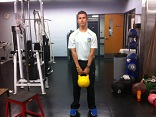
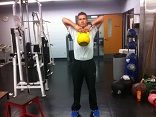
Overhead press
- Exercise Explanation: Slightly stagger your feet a comfortable width apart to provide yourself with sufficient stability. While keeping the core engaged, raise the kettlebell above your head and prevent your back from extending or shifting towards the side.

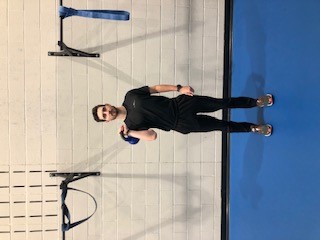
Lower body
Kettlebell swing
- Exercise explanation: Hold onto a kettlebell with both hands and position your feet slightly greater than shoulder width apart. Bring the kettlebell in between your legs and thrust your hips forwards to swing the kettlebell into the air. Once the kettlebell starts to fall and return to the starting position, use the momentum of the kettlebell to complete the next repetition of the exercise. The prime movers of this exercise are the hips, not the shoulders or arms.
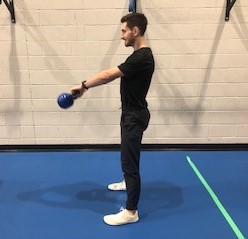
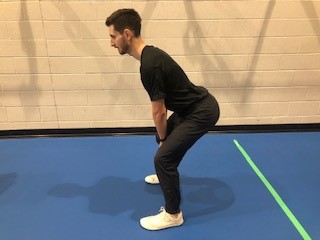
Goblet squat
- Exercise explanation: Bend from your hips and knees at the same time and lower your body as if you were going to sit into a chair. Focus on pushing your feet through the ground (activating the glute muscles) to return to the starting position.
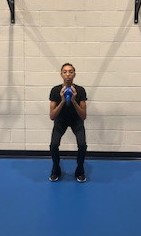
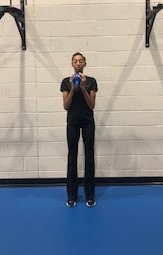
Barbell
- Upper body
- Bench press
- Exercise Explanation: While lying on a bench, engage the core and lift the barbell off the rack. Lower the barbell into a comfortable depth towards the chest. With the feet planted firmly on the ground and core still engaged, push the dumbbell upwards. Always have a spotter to assist safely re-racking the barbell after completing a challenging set of this exercise.
- Bench press
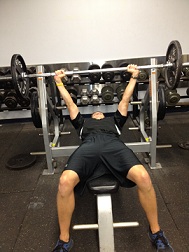
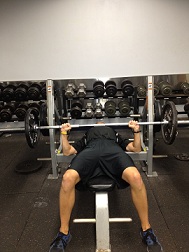
Bent over row
- Exercise Explanation: In a staggered position with feet slightly greater than hip width apart, lift the barbell towards the ribcage. Squeeze the shoulder blades together as you are raising the weight, and then slowly return the barbell to the starting position.
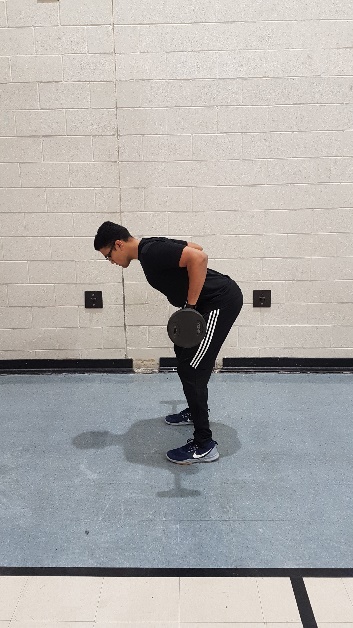
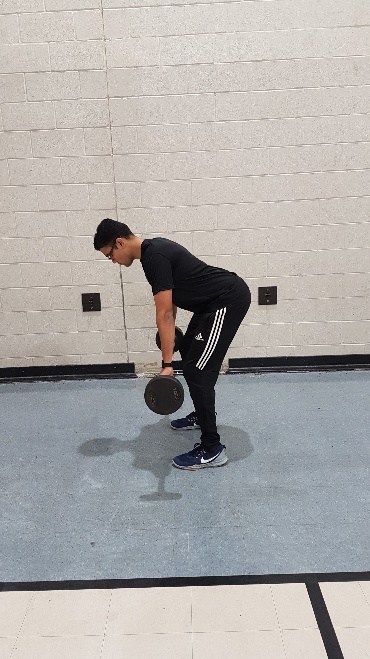
Landmine press
- Exercise Explanation: Fix a barbell to a landmine-post attachment. From a squat position, raise the end of the barbell to chest height. Step into a split stance position and then raise the end of the barbell. This exercise can be completed with both hands holding the dumbbell or one arm at a time.
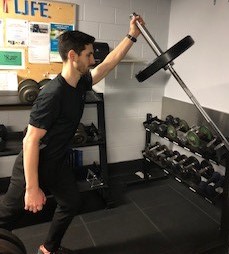
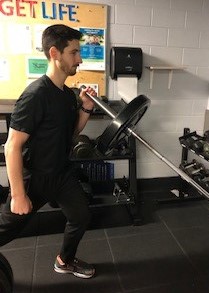
- Lower body
Squat
- Exercise Explanation: Bend from your hips and knees at the same time and lower your body as if you were going to sit into a chair. Descend into a comfortable position then focus on pushing your feet through the ground when ascending. Keep your hips, knees, and toes aligned at all times
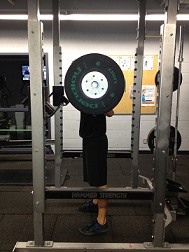
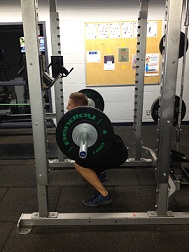
Deadlift
- Exercise Explanation: Stand close a barbell with feet hip width apart. Grab onto the barbell with your hands just on the outside of the knee. When completing the lift, firmly grip the barbell, engage the core, and push both feet into the ground as you begin to extend the hips. Keep the barbell close to your body and maintain a neutral spine throughout the entire movement.
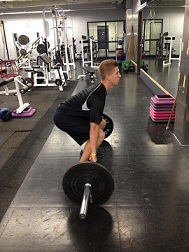
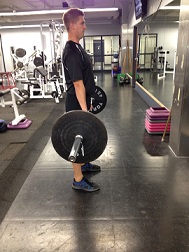
Lunge
- Exercise Explanation: Engage the core and slowly descend into a comfortable position while preventing excessive knee bending (i.e. prevent the knee from travelling > 1-2 inches past the toes). Push through the mid-foot and return to the starting position. Keep your hips, knees, and toes aligned at all times.
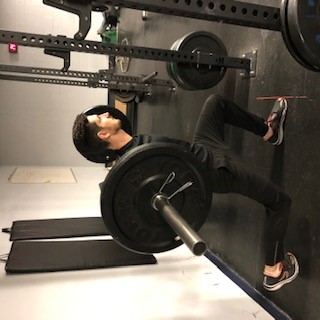
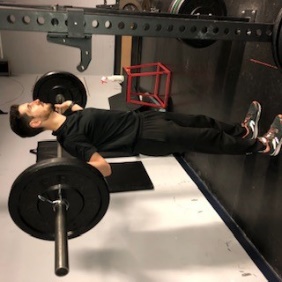
Resistance bands
- Upper body
Assisted pull-ups
- Exercise Explanation: Fix a large resistance band to a pull-up bar and place one knee inside the resistance band. Pull your body upwards towards the pull-up bar then slowly descend to the starting position. Ensure the resistance band is safely fixed to the pull-up bar before starting the exercise.
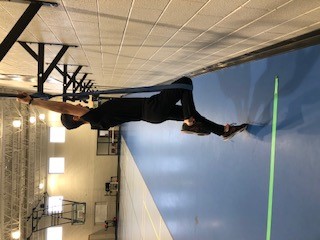
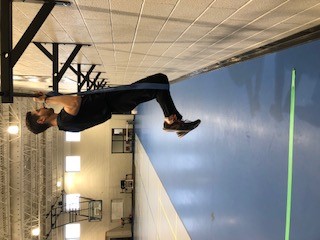
Lower body
Monster walk
- Exercise Description: Step into a large resistance band and hold onto the top of the band. In this position, the resistance band should create an hourglass shape. Take a small step towards the side (i.e. side shuffle) while keeping the shoulders stable. Prevent the shoulders from moving up and down.
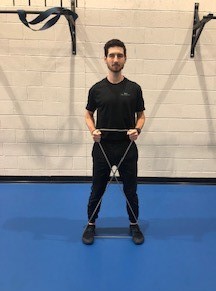
Pallof press
- Exercise Description: This exercise can be performed with a dual pulley or a resistance band fixed to a stable object (e.g. power rack). Grab ahold of the handle of the dual pulley or band and turn 90 degrees away from the handle/band so the resistance is pulling from the side. With the knees slightly bent, push the cable in front of your body and use your core to prevent your torso from rotating towards the handle/band.
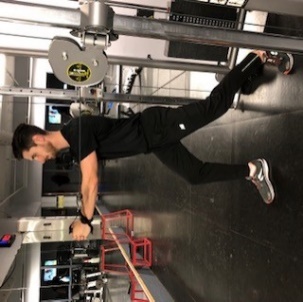
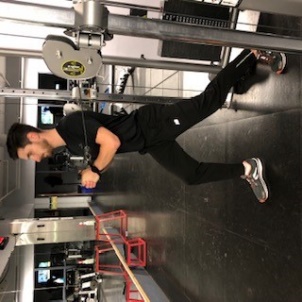
Bodyweight exercises
- Upper body
- Push-ups
- Exercise Explanation: Place your hands on the ground at a comfortable position slightly greater than shoulder width apart. Lower your torso in a slow and controlled manner to a comfortable depth and then firmly push into the ground to ascend.
- Push-ups
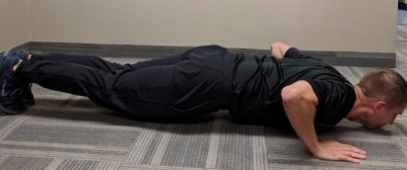
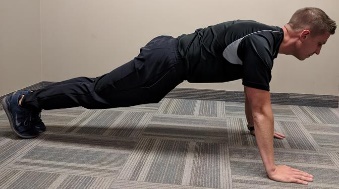
Squat
- Exercise Explanation: Bend from your hips and knees at the same time and lower your body as if you were going to sit into a chair. Descend into a comfortable position then focus on pushing your feet through the ground when ascending. Keep your hips, knees, and toes aligned at all times
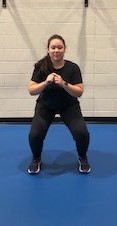
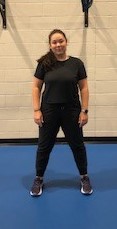
Squat jump
- Exercise Explanation: Descent into a squat by bending from the knees and hips. Jump into the air and land softly in the same area the squat was completed. Keep your hips, knees, and toes aligned in both the takeoff and landing phase of the squat jump.
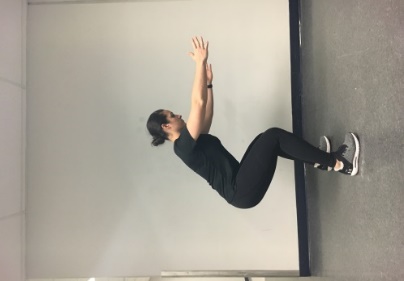
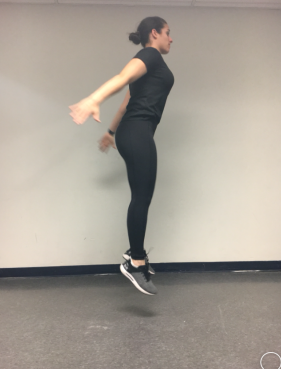
Lunge (forward or reverse)
- Exercise Explanation: Descend into a comfortable position while preventing excessive knee bending (i.e. prevent the knee from travelling > 1-2 inches past the toes). Push through the mid-foot when ascending from the lunge. Keep your hips, knees, and toes aligned at all times.
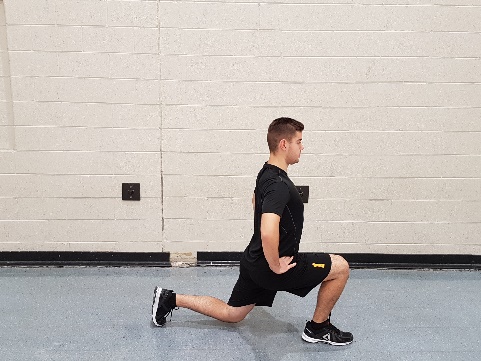
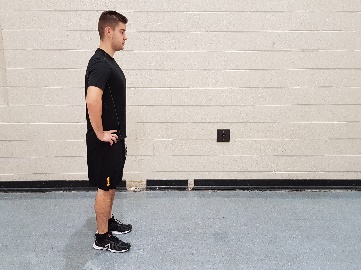
Side lunge
- Exercise Explanation: Take a large step towards the side and descend into a comfortable position while preventing excessive knee forward bending (i.e. prevent the knee from travelling > 1-2 inches past the toes). Keep your hips, knees, and toes aligned at all times.
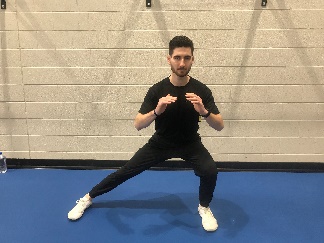
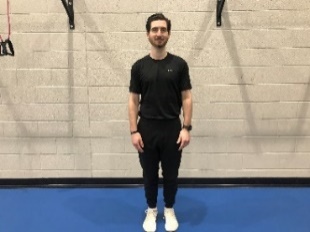
Glute bridges
- Exercise Explanation: With your back flat against the ground, raise your hips into the air by pushing your feet into the ground.
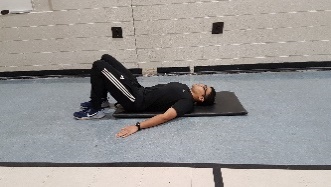
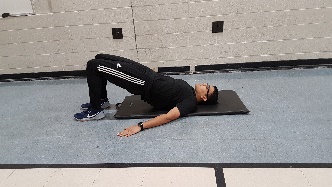
Split-squat
- Exercise Explanation: Descend into a comfortable position while preventing excessive knee bending (i.e. prevent the knee from travelling > 1-2 inches past the toes). Push through the mid-foot when ascending and keep your knees and toes aligned throughout the entire movement.
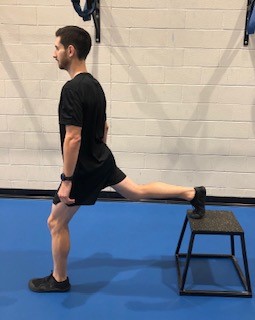
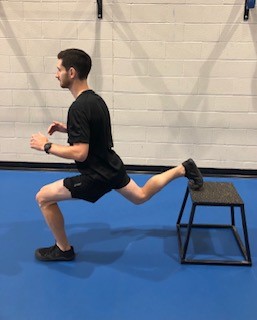
Wall sit
- Exercise Explanation: Sit with your back flat against a wall. Descend into a comfortable squat depth and hold the squat the position. When completed the wall sit, slowly and gradually walk out of the wall-sit position.
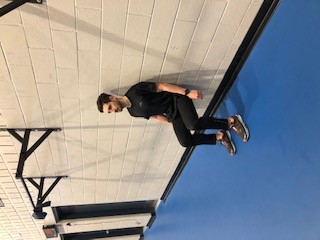
Single leg Romanian deadlift
- Exercise Explanation: Raise one knee into the air. While moving through the hip joint, engage the core and move the heel of the elevated leg towards the back wall. Return to the starting position while keeping a neutral spine throughout the movement.
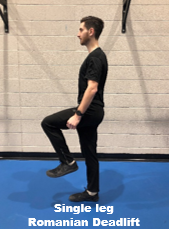
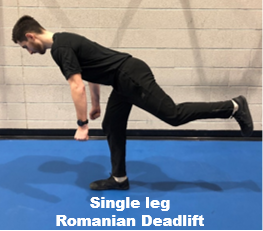
Step-up
- Exercise Explanation: Perform a powerful step on a bench/chair/stair by activating the glues then raise the opposite knee. Return to the start position and then complete the exercise with the other leg.
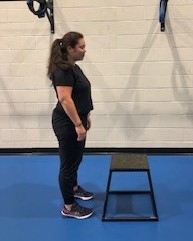
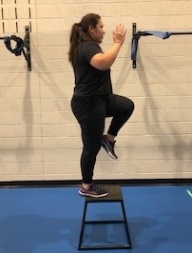
Plank variations
- Front plank
- Exercise Explanation: Slightly push into the ground with both forearms and keep the core engaged throughout the entire duration of the plank. Prevent the hips from dropping as the plank progresses.
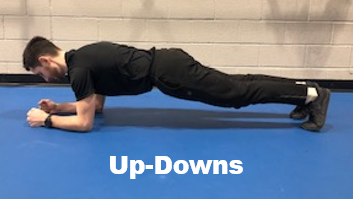
Front plan with shoulder taps
- Exercise Explanation: Raise one hand off the ground, touch the opposite shoulder and then return to the starting position. When lifting the hand off the ground, press the other three limbs firmly into the ground to maintain stability and prevent the torso and hips from swaying side to side.
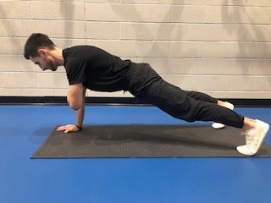
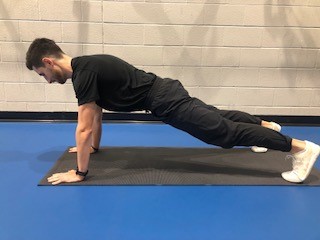
Side plank
- Option: leg raise
- Exercise Explanation: From the side plank position, raise one leg into the air. Keep the core engaged throughout the duration of the plank.
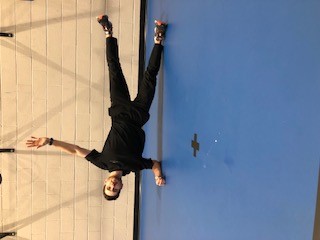
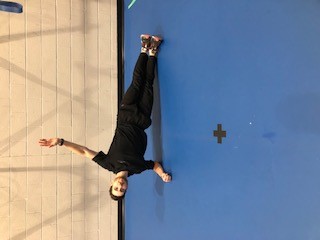
Option: knee to elbow
- Exercise Explanation: From the side plank position, raise one arm and leg into the air. Bring the elbow and the knee together and then slowly return to the starting position. Engage the core throughout the duration of the plank.
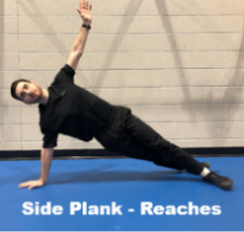
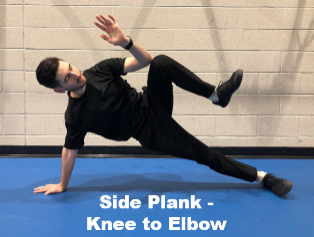
Option: reaches under body
- Exercise Explanation: From the side plank position, slowly move the top hand through the gap created between the bottom arm and the legs. Focus on keeping the core engaged throughout the entire movement.
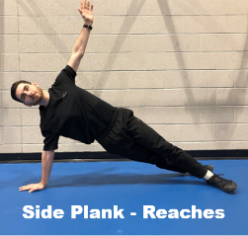
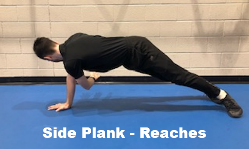
Up-downs
- Exercise Explanation: From the high plank position, lower yourself towards the ground by placing one forearm on the ground at a time. Return to the starting position by moving from your forearms to your hands one arm at a time. Keep the core engaged throughout the entire movement.
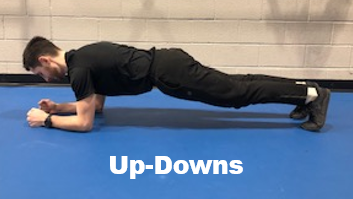
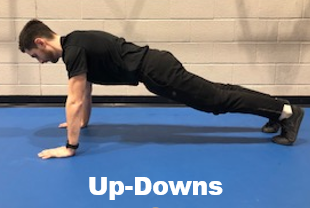
V-Sit
- Exercise Explanation: From a seated position, raise both legs and arms off the ground into the air. Bring both hands in front of your body with the elbows extended and try to keep both knees straight while elevated.
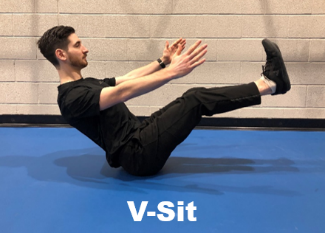
Deadbug
- Exercise Explanation: While lying on your back, slowly lower one arm and opposite leg until parallel with the ground. Return to the starting position and complete the same movement with the other limbs. Keep the core engaged throughout the entire movement.
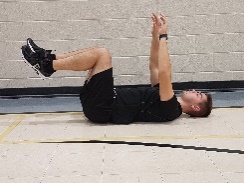
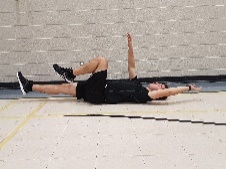
Bird dog
- Exercise Explanation: Slowly raise one arm and opposite leg until parallel with the ground. Return to the starting position and complete with the other limbs. Keep the core engaged throughout the entire movement.
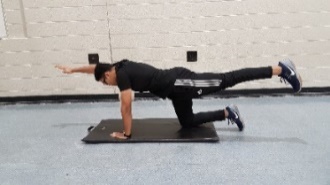
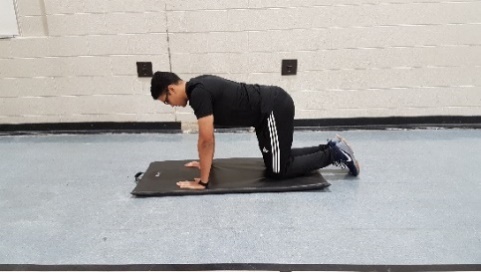
Flutter kicks
- Exercise Explanation: While laying on your back, raise both legs into the air while keeping the knees straight. Complete small, slow kicks with both legs. Engage the core throughout the duration of the exercise.
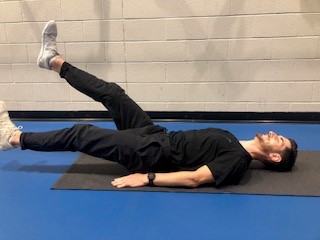
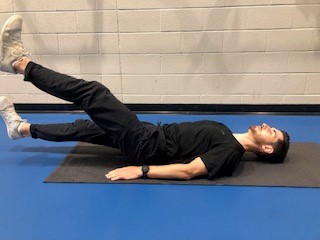
McGill Sit-ups
- Exercise Explanation: Lay on your back with one knee bent and place your hands underneath the curve in your lower back (a few inches above the waistline). Raise the chest off the ground until the shoulder blades have been raised off the ground and then return to the starting position.
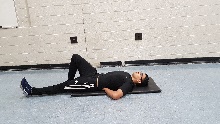
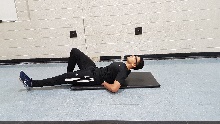
Seated bicycle kicks
- Exercise Explanation: Sit on the ground with your legs straightened in front of your body. Raise both legs slightly off the ground and complete small forward circles with your feet as if you were pedaling a bicycle.
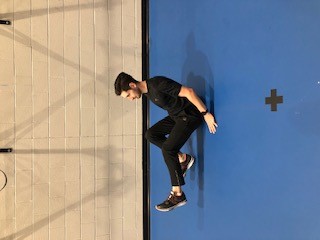
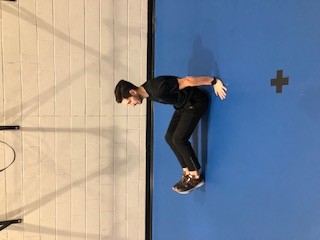
Low boat / High boat
- Exercise Explanation: Similar to the V-sit exercise, sit on the ground and raise both arms and legs into the air alternating between low boat and high boat. When completing low boat, raise the legs and back slightly off the ground. When transitioning to high boat, raise the legs and back slightly higher off the ground. Focus on maintaining a flat upper back throughout the duration of the exercise.
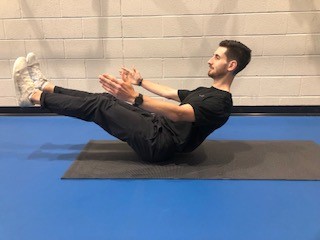
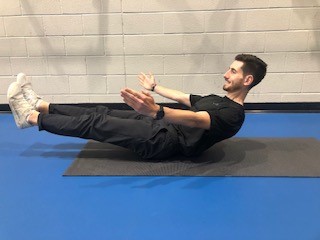
- Cardio-Based Movements
Mountain climbers
- Exercise Explanation: Start in the push-up position and place your feet hip-width apart. In a rhythm similar to running where one foot is always off the ground, bring one knee into the chest and raise the foot off the ground. While returning the foot to the starting position, raise the other knee towards the chest and complete the same movement.
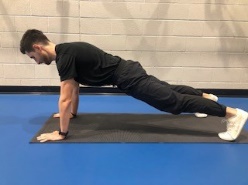
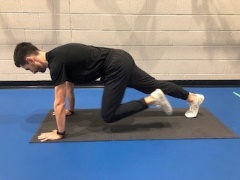
Step-ups
- Exercise Explanation: Perform a powerful step on a bench/chair/stair by activating the glues then raising the opposite knee. Return to the start position and complete with the other leg.
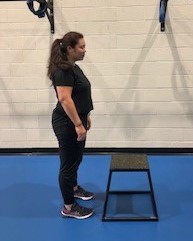
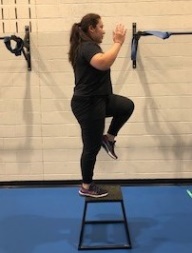
Box Jump
- Exercise Explanation: Stand 1-2 feet behind a stable, elevated surface (bench, box). Descend into a ¼ squat and jump on top of the stable surface. Return to the starting position by stepping down one foot at a time. Keep the hips, knees, and toes aligned at both takeoff and landing phases of the jump.
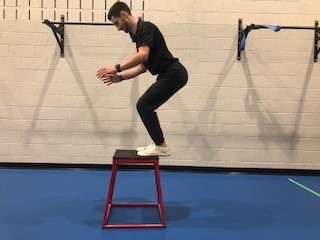
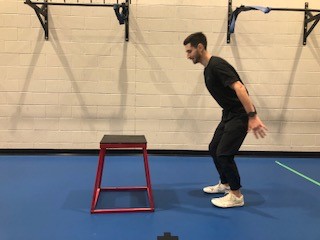
Jumping jacks
- Exercise Explanation: Jump into the air, raise the arms out towards the sides and land with the feet slightly greater than shoulder width apart. Jump again bringing the feet and arms towards the starting position.
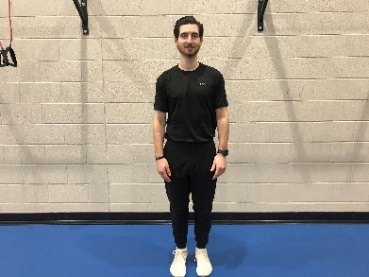
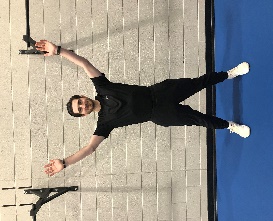
Burpees
- Exercise Explanation: Start by jumping with your arms above your head. After landing, lower your body towards the ground into a push-up position then ascend to a standing position.
